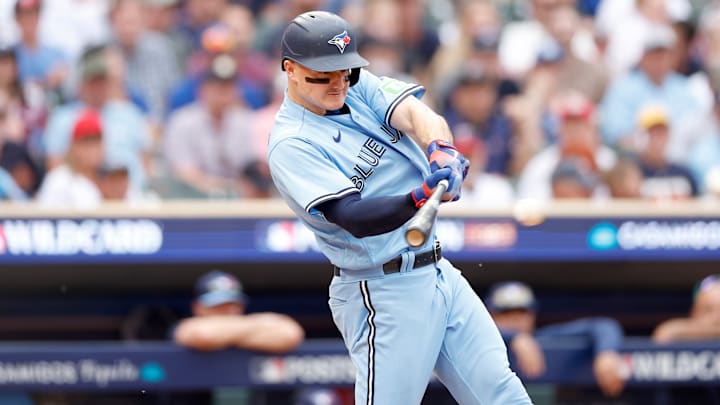The SF Giants have not done quite as much to upgrade their roster this offseason as their vocal fanbase would like. Matt Chapman is one name who has been consistently tied to them since the beginning of the offseason, and he’s still available. There’s a lot to like – and a little bit not to – about Chapman as a potential pickup for Bob Melvin’s Giants.
What are the pros and cons for the SF Giants in signing a slick-fielding infielder?
Pros
1. Personal ties
Both Bob Melvin and Farhan Zaidi are plenty familiar with Chapman from their time with the Oakland A’s. New third-base coach Matt Williams and Melvin have both gone on the record raving about Chapman as a potential fit, and it’s quite rare for team representatives to make such public comments about current free agents. Hat tip to Danny Emerman of The Mercury News for transcribing Williams' quote on KNBR earlier this offseason:
"Matt Williams, a 5x All-Star and 4x Gold-Glover third baseman who played against Scott Rolen and Chipper Jones and coached Manny Machado, called free agent 3B Matt Chapman “the best that I’ve ever seen at that position.”"Matt Williams
So there are multiple people in the organization who are advocating for signing Chapman. What’s more, Chapman already carries a lot of name recognition in the Bay Area thanks to starring in Oakland before his stint with the Blue Jays, and if there’s one thing Giants fans are hungry for, it’s star power. The fact that he might help them win over a couple of former A’s fans after they depart for Las Vegas surely shouldn’t be lost on Giants ownership, either.
2. Huge defensive presence
Defense, as Williams alluded to, is Chapman’s calling card and would be an upgrade over the incumbent J.D. Davis. With ground-ball pitchers such as Logan Webb and Jordan Hicks in the rotation, infield defense will be extremely important.
Upgrades in that department seem especially crucial seeing as the Giants are coming off a year of well-below average infield defense and have essentially replaced Brandon Crawford in the field with rookie Marco Luciano, a bat-first shortstop who figures to be a bit wet behind the ears defensively.
Based on at least one metric, Davis was part of subpar glovework last season, having been merely average at best with the glove over his career. FanGraphs was especially skeptical about his defensive chops, pegging him at -11 DRS in 2023 and -38 in his 2,240 career innings at the hot corner.
Interestingly, the Giants infield allowed a .269 batting average on ground balls to the left side in 2023. That was the second-highest mark in baseball, behind only the New York Mets (.280 batting average). Chapman's 2023 club, the Toronto Blue Jays, allowed a .221 batting average on ground balls to the left side. Why even mention that? The Giants led baseball with a 48.7 percent ground ball rate last year. The Giants need a defense that can convert ground balls at a higher rate.
Chapman was worth +12 DRS in 2023 and a whopping +92 in his career, and has won four Gold Glove awards along with two Platinum Gloves. You don’t have to look very hard to see why Chapman would be an absolute boon for their run prevention.
3. Batted ball profile
Chapman would only be a modest offensive upgrade over the incumbent Davis, but a modest upgrade is still an upgrade. Buoyed by a strong first half, Davis finished 2023 with a .248 average, 18 homers and a 104 wRC+.
Chapman was good for a .240 average, 17 homers and a 110 wRC+, very comparable despite his WAR being considerably better due to his glove and baserunning. Their strikeout and walk rates were also eerily similar in 2023 – Davis had a 27.8 K% and 9.5 BB%, while Chapman was a hair higher in both categories at 28.4 K% and 10.7 BB%.
Even though the home runs were down for Chapman last year, how hard he hit the ball was the main offensive separator between him and Davis. Statcast marked Chapman’s 93.4 MPH average exit velocity as seventh among all qualified hitters while his hard-hit percentage of 56.3% only trailed Aaron Judge. Those numbers make him sound near-elite, but his .319 BABIP was also markedly higher than his career .295 mark, so it’s also evident that his modest results weren’t the result of too much bad luck. It is easy to believe that his surface-level stats can rebound in 2024 given how well he hits the ball.
